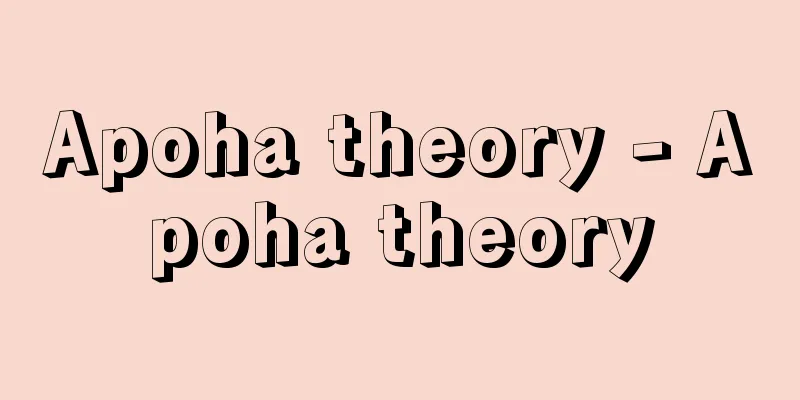Apoha theory - Apoha theory

|
…In epistemology, he clarified that there are two theories of the Yogacara theory, which holds that the content of perception is an image that appears on the subject of perception: image truth and image falsity, and also presented the Madhyamaka position that denies both of these. In linguistic philosophy, he promoted the apoha theory, which holds that words do not express reality, and elucidated the fictitious nature of language and its underlying secular effectiveness and expressive function. His main work, Quantum Compendium, is particularly difficult to understand, and has produced a huge number of commentaries in India and Tibet. … From DignagaIn his two major works, "The Inmyo-Samyo-Samyo" and "The Inmyo-Sam ... His logic was continued and developed by his disciple Dharmakirti. *Some of the terminology explanations that refer to the "Apoha theory" are listed below. Source | Heibonsha World Encyclopedia 2nd Edition | Information |
|
…認識論においては,認識される内容は認識主観の上に現れた形象であるとする唯識説に形象真実と形象虚偽の2説あることを明かし,かつそれらをも否定する中観の立場をも示した。また言語哲学においては,言葉は実在を表示しないとするアポーハ説を推し進め,言語のもつ仮構性とそれに裏打ちされた世俗的な有効性,表現機能を解明した。主著《量評釈》はとくに難解で,インドとチベットで膨大な注釈書群を生み出した。… 【ディグナーガ】より…《因明正理門論》《集量論》の二大主著において,従来の諸派の説を批判して,唯識思想に立脚して仏教論理学を組織し,新因明(しんいんみよう)といわれる新論理学説を形成した。その特色は,(1)正しい認識の根拠(量)を知覚(現量)と推理(比量)の二つに限定したこと,(2)知覚を思惟を含まないもの(現量除分別)と定義したこと,(3)推理の形式を宗(主張)・因(理由)・喩(比喩)の三支作法としたこと,(4)正しい因の備えるべき三条件(因の三相)を明確にしたこと,(5)さらに知覚の対象となる個別相(自相)と一般相(共相(ぐうそう))を峻別し,後者を〈他者の排除〉によって仮構された非実在にすぎないとするアポーハ説を説いたこと,などが挙げられる。彼の論理学はその孫弟子であるダルマキールティによって継承発展させられた。… ※「アポーハ説」について言及している用語解説の一部を掲載しています。 出典|株式会社平凡社世界大百科事典 第2版について | 情報 |
Recommend
Rowland circle
...It has little coma aberration and is widely us...
Brot
…The French word pain is the same. In English it ...
Somov, KA (English spelling) SomovKA
...Also the name of the group of intellectuals an...
Wallace, L.
...A novel written by American lawyer, politician...
Deep-sea fan
… canyon submarine canyon - a relatively narrow, ...
Kartoswillyo - Kartoswillyo
…The Remville Agreement signed with the Netherlan...
Kinoshita Fossil Zone - I want to
…Tokyo Christian University is located near Chiba...
Employment index - index of employment
In order to clarify the fluctuations in employmen...
Varanidae
…any of 31 species of lizards in the family Varan...
Kakogawa [city] - Kakogawa
A city in the eastern part of the Harima Plain, do...
Ibrahim Roadie - Ibrahim Roadie
...While the other dynasties were of Turkish orig...
"Kimyohongan" - "Kimyohongan"
…It was written during the Genkō era (1321-24). I...
Okifuna - Okifuna
…It is also called Umibuna. In Kochi and its surr...
Bethlehem
A town on the west bank of the Jordan River in Pal...
Weinberg, W.
...Research into natural and artificial mutations...









